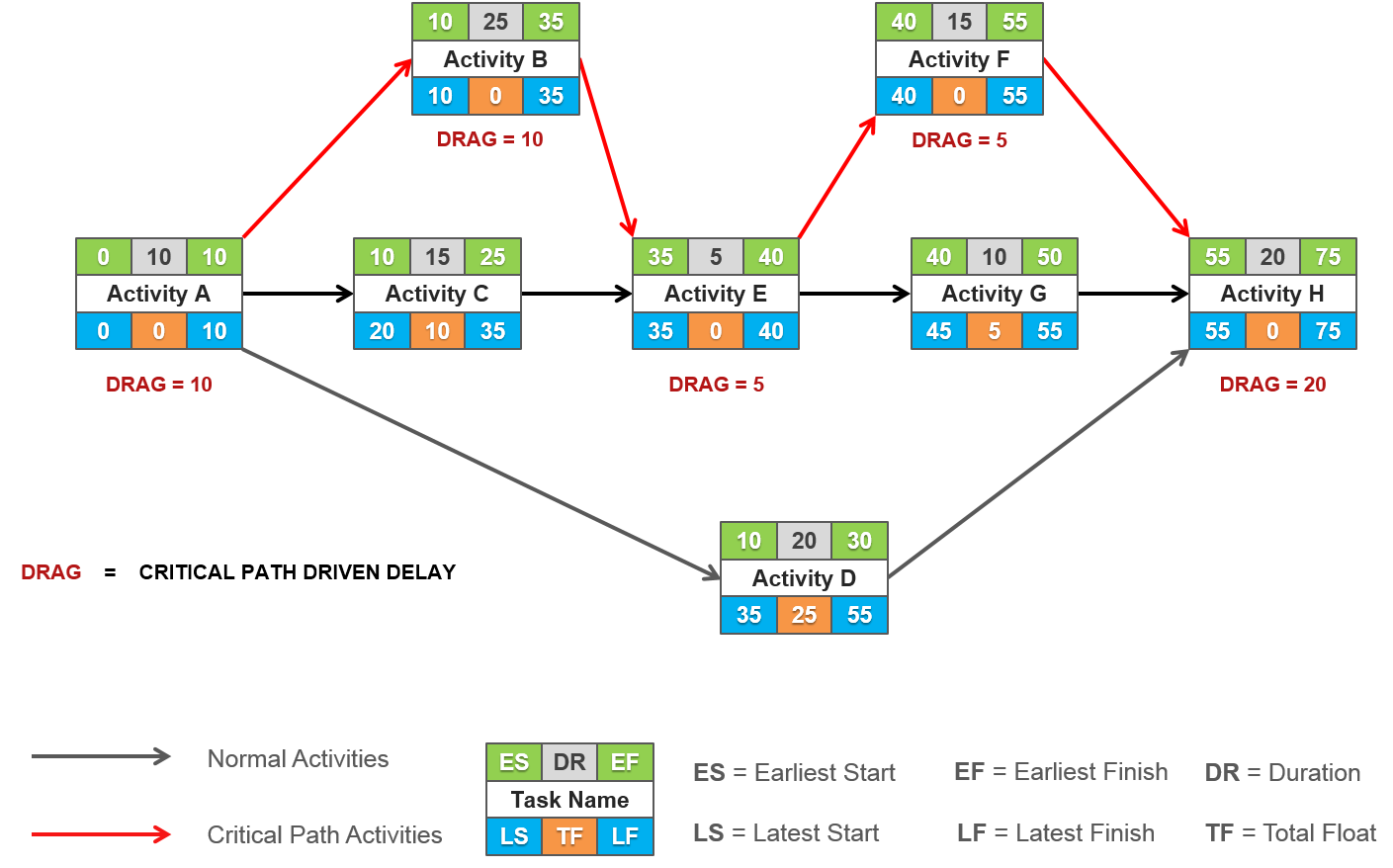The Critical Path Method (CPM) is the most commonly used technique for construction scheduling. The critical path refers to the longest stretch of the activities. The duration of the critical path method represents the time required to complete a construction project.
The critical path method helps to decide the following things:
- The duration to complete an activity
- The dependencies between the activities
- The tasks required to complete the project
Why is CPM scheduling important?
The use of CPM scheduling is essential in construction projects. CPM schedules will help you identify the activities required to complete the project. It will help to determine the critical activities that can’t be delayed.
The CPM schedule also indicates float for each activity that identifies how much the activities can be delayed without causing the project delay.

Gain further insights on project management by checking out our guide on Interpreting the Primavera Schedule Log.
CPM Schedule Elements
To understand the critical path method scheduling, it is essential to understand the elements of a CPM schedule. The important elements are:
- Earliest Start Date
- Latest Start Date
- Earliest Finish Date
- Latest Finish Date
- Total Float
- Crash Duration
Earliest Start Date
It is the earliest date a specific task can begin in a project. The earliest start date for the first activity in a project is usually the project’s overall earliest start date.
Latest Start Date
It is the latest date a task can start without causing a delay to the project. The whole project will be affected if an activity doesn’t start at the latest start date.
Earliest Finish Date
The earliest date a task can be completed is the earliest finish date.
Latest Finish Date
It is the latest possible date that each task can be completed such that the project finish date remains the same.
Total Float
The total float is the amount of time an activity can be delayed without causing a delay in the project’s deadline. Total float is the difference between the project’s late and early dates. Total float is calculated using the formulas given below:
Total Float = Late Finish Date – Early Finish Date
Total Float = Late Start Date – Early Start Date
Crash Duration
It is the shortest time necessary to complete a task. Crashing is done by enhancing the project’s resources, which helps make tasks take less time than planned.
CPM Scheduling Software
Project management software will help to create a CPM schedule efficiently and accurately. Manual scheduling is impossible in construction projects as the number of activities is enormous, but you can understand CPM scheduling.
Popular CPM scheduling software includes:
- Primavera P-6
- Microsoft Project
- Smartsheet
The software will assist in breaking the project down into tasks and setting important task details. These programs will automatically create a network diagram and the Gantt Chart.
Discover how AI is revolutionizing the field of construction management and the potential benefits it brings to project efficiency in our article on the Impacts of Artificial Intelligence on Construction Management.
Discover how 4D Simulation and Planning can complement traditional CPM Scheduling by providing a visual and temporal dimension to project management, leading to more efficient and effective construction processes.
End Notes
CPM scheduling helps manage all types of construction projects. Leopard Project Controls should be your priority if you are looking for cost-effective CPM Scheduling Consultation, including baseline schedule development, resource & cost schedule management, progress update & reporting, earned value management, and schedule review support.
Leopard Projects Control specializes in CPM scheduling to ensure your construction projects are completed on time and within budget.





